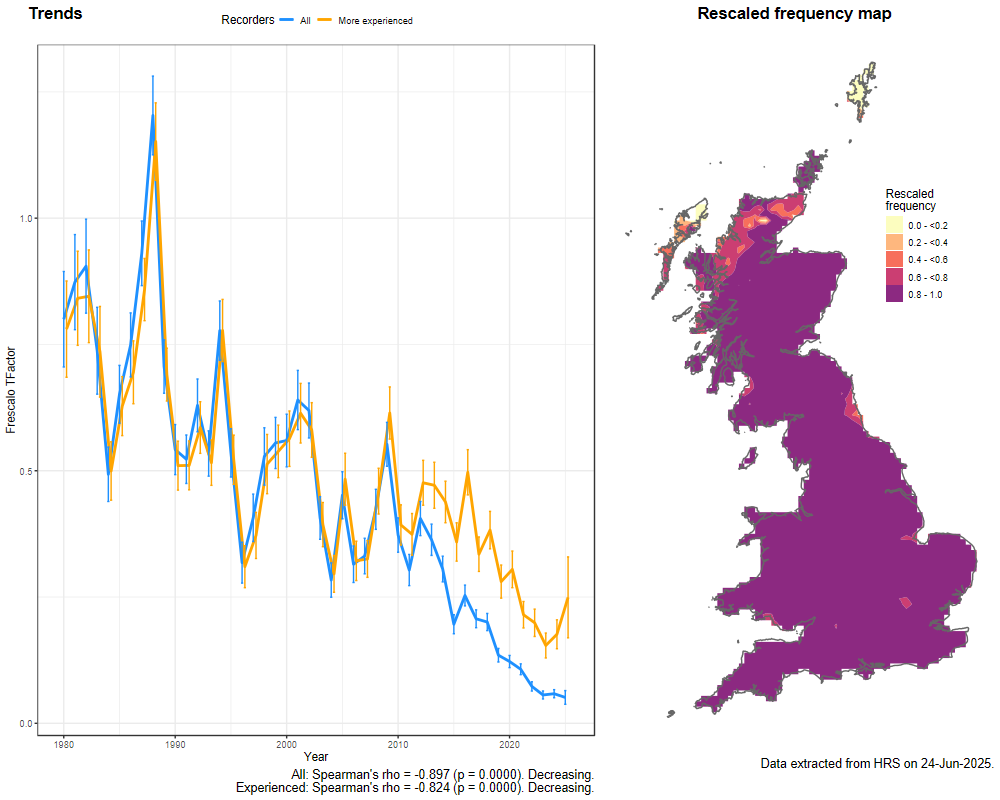Neoascia podagrica (Fabricius, 1775)
Identification
Identification difficulty = 3. ![]()
![]() according to Ball & Morris, 20241
according to Ball & Morris, 20241
Biology
The small, semi-aquatic larva has been found in wet manure, cow-dung and wet compost. They seem to be able to utilise a wide range of situations where highly enriched, semi-aquatic conditions are present. Adults can be found in any habitat where there is lush vegetation, typically in hedgerows, woodland edge, gardens (where it is presumably breeding in compost heaps) and around the margins of water. They are typically found by sweeping, but will visit a wide range of flowers. Males hover near to flowers in bloom.
Flight period
The following plots show the number of unique records per week excluding those reported to be of immature stages.

Distribution
This is a widely distributed and frequent species.

Trends
The following plots show the Frescalo TFactor vs year and a map of the rescaled frequency (all records) for the species.
-
Ball, S., & Morris, R. (2024). Hoverflies of Britain and Ireland. WILDGuides (3rd ed.). Oxford: Princeton University Press. ↩